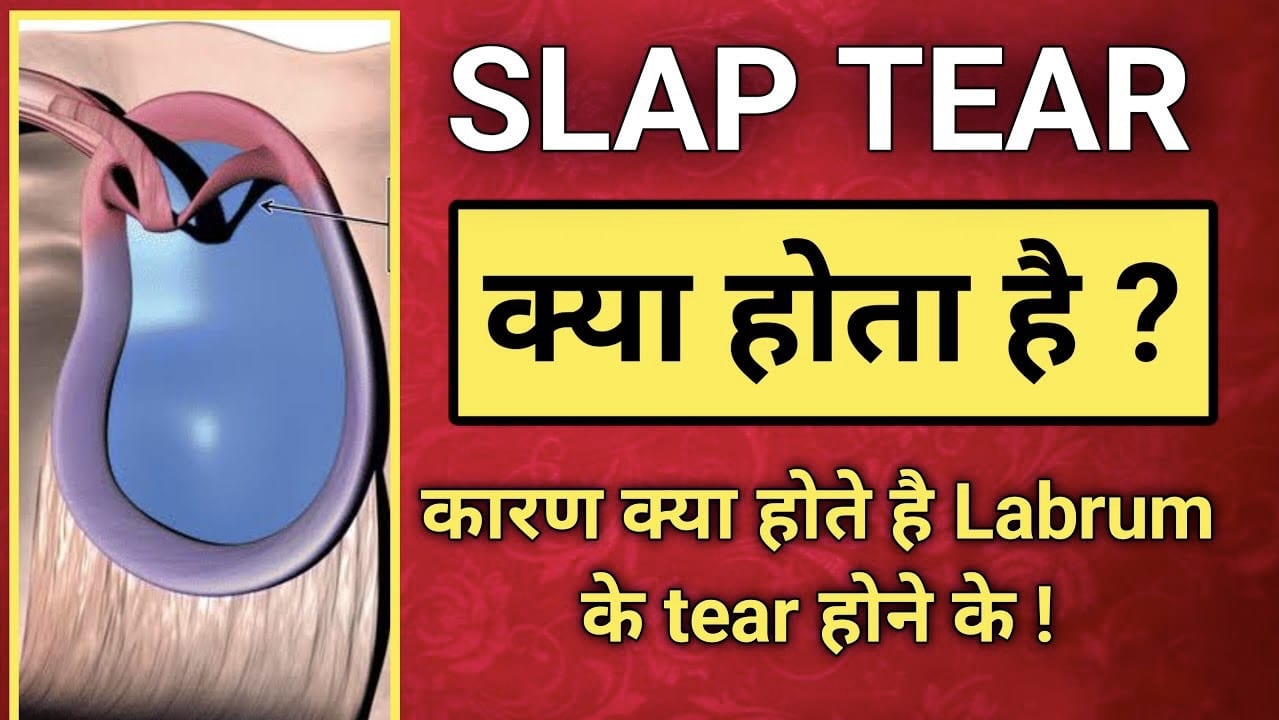What is SLAP Tear
SLAP Tear – A SLAP tear, also known as a superior labrum anterior to posterior tear
Is an injury that affects the shoulder joint. The labrum is a ring of cartilage that surrounds the socket of the shoulder joint helping to stabilize and provide support to the joint.
A SLAP tear specifically occurs at the top part of the labrum where the biceps tendon attaches.
It can result from trauma or repetitive overhead activities, such as throwing or lifting heavy objects.
SLAP tears are commonly seen in athletes particularly those involved in sports that require repetitive overhead motions such as baseball or tennis.
Symptoms may include:
- Pain: Persistent pain, particularly with overhead activities or when lifting heavy objects.
- Decreased range of motion: Difficulty in moving the shoulder through its full range of motion.
- Weakness: A symptom of weakness or instability in the shoulder joint .
- Popping or clicking sensation: Some individuals may experience a popping or clicking sound when moving the shoulder.
Diagnosis
The diagnosis of a SLAP tear typically involves a combination of a thorough physical examination, patient history, and imaging studies.
Here are the steps typically taken in diagnosing a SLAP tear:
Medical history:
Your doctor will ask you about your symptoms, any specific activities or incidents that may have caused the injury, and any previous shoulder problems or surgeries.
Physical examination:
The doctor will perform some physical tests to assess your Shoulder range of motion, strength and stability.
They will also examine for any specific signs or symptoms that may indicate a SLAP tear, such as pain with certain movements or tenderness at the top of the shoulder joint.
Special tests:
There are specific tests that can help assess for a SLAP tear. These tests may include:
O’Brien’s test:
This test involves holding the arm in a specific position and applying downward pressure while rotating the forearm. Pain or a clicking sensation during this test can be indicative of a SLAP tear.
Crank test:
The doctor will bend your elbow to 90 degrees and rotate your arm while applying pressure. Pain or clicking during this maneuver may suggest a SLAP tear.
Speed’s test:
The doctor will ask you to extend your arm forward with the palm facing up while they apply resistance. Pain or tenderness at the top of the shoulder during this test may be suggestive of a SLAP tear.
Imaging studies:
While a physical examination and history can provide valuable information, imaging studies are use to confirm the diagnosis. These may include:
Magnetic resonance imaging (MRI):
An MRI will provide detail images of the soft tissues in the affected region, including the labrum. It can help visualize the presence and extent of a SLAP tear.
Magnetic resonance arthrogram (MRA):
This is a specialize MRI where a contrast dye will injected into the shoulder joint before the scan. The dye enhances the visualization of the labrum and can provide more detailed information about the tear.
X-rays:
X-rays are typically perform to assess the bony structures of the shoulder joint and rule out other potential causes of shoulder pain.
It’s important to consult with a healthcare professional such as an orthopedic surgeon or a Physiotherapists for an accurate diagnosis of a SLAP tear.
They will consider your symptoms, perform a thorough evaluation and order the necessary imaging studies to confirm the diagnosis.
SLAP Tear Physiotherapy
Physiotherapy plays a crucial role in the management and rehabilitation of a SLAP tear.
The goals of physiotherapy for a SLAP tear are to reduce pain and inflammation, improve shoulder range of motion and strength, restore functional abilities and prevent future injuries.
Here are some common physiotherapy techniques and interventions used in the treatment of a SLAP tear:
Initial rest and pain management:
Initially your physiotherapist may recommend rest and the use of modalities such as ice or heat therapy to reduce pain and inflammation in the shoulder joint.
Range of motion exercises:
Gentle range of motion exercises are gradually introduce to maintain mobility in the shoulder joint.
These exercises may include pendulum swings, passive and active-assisted range of motion exercises and joint mobilization techniques.
Strengthening exercises:
As pain and inflammation decrease your physiotherapist will prescribe specific exercises to strengthen the muscles around the shoulder joint.
This may involve exercises targeting the rotator cuff muscles, scapular stabilizers, and the muscles of the upper back and core.
Examples of exercises include resistance band exercises, shoulder presses, rows and scapular stabilization exercises.
Proprioception and balance training:
Proprioception exercises help improve joint position sense and stability.
These exercises challenge the shoulder joint’s stability through various movements such as perturbations, balance board exercises and proprioceptive taping techniques.
Functional training:
Once strength and stability improve, functional exercises are introduced to simulate activities specific to your daily life or sports.
These exercises focus on improving coordination, endurance and sport-specific movements.
Manual therapy:
Your physiotherapist may use manual therapy techniques such as joint mobilizations, soft tissue mobilization and myofascial release to address any joint or soft tissue restrictions contributing to your symptoms.
Taping and bracing:
In some cases taping techniques or bracing may be use to provide additional support and stability to the shoulder joint during the rehabilitation process.
It is important to note that the specific physiotherapy program will be tailor to your individual needs and the severity of your SLAP tear.
Compliance with your physiotherapy exercises and regular communication with your physiotherapist are crucial for a successful recovery.
They will guide you through the appropriate exercises, monitor your progress and make adjustments to your treatment plan as needed.
